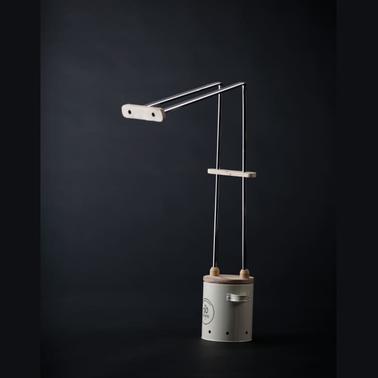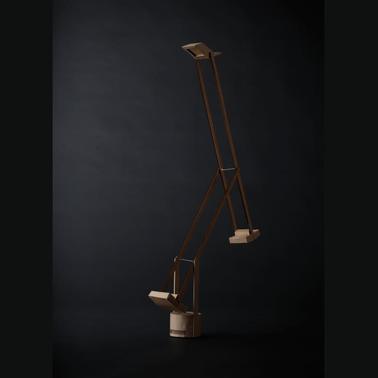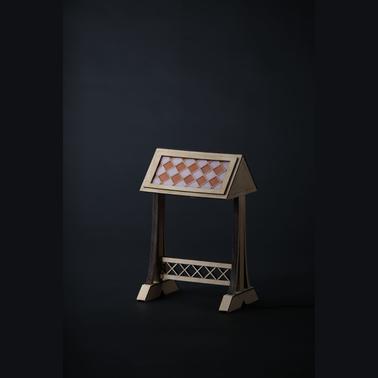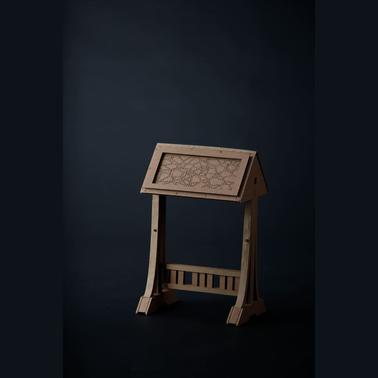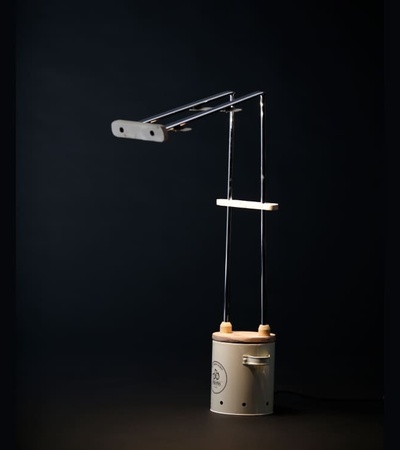
- Home
- Student Projects
- Hacking The Masters
Hacking the Masters
Inspired by NASA's Artemis Mission Guidelines and the concept of in-situ resource utilization, Hacking the Masterschallenged students to rethink the meaning of a masterpiece by recreating a functional design icon. Through detailed research, sketches, mockups, material experimentation, and the creation of a working replica, participants explored sustainable design strategies.
The project culminated in the production of a DIY lamp that adhered to the original design’s function, durability, and purpose. Students were encouraged to avoid purchasing new materials, instead focusing on reusing found objects and available materials. The use of glue was prohibited, promoting reversible joinery techniques for a more sustainable, adaptable approach to design.
Each student worked individually, leveraging Fablab facilities such as laser cutting, 3D printing, and traditional woodworking methods to bring their designs to life.
Dharika Raj Singh (with Leo Matias Imbert and Paolo Millan)
"Hacking the masters" is a semester-long project focused on deconstructing and familiarising ourselves with lamp construction and characteristics. As a hands-on approach, each team dissected one design-iconic lamp, resulting in an intimate and detailed connaissance of the artist's work.
The "Tizio" model, designed by Richard Sapper for the company Artemide, was the subject of design surgery for the group. Over the course of a few months we learnt every detail of the lamp by creating sketches, blueprints, cardboard models and prototypes.
The Tizio is revolutionary for its cordless design, focusing on the metallic structure's electrical conducting properties for its use. We implemented this core principle in our remake of the lamp, while making modifications and using substitutions to make it our own. In the spirit of sustainable practices, our team utilised recycled materials and implemented reversible joints to ensure circularity in the design process.
We assembled all parts of the lamp from the electrical wiring to the wooden insulators. The lamp works by using a transformer to convert the standard voltage to 9 volts for safety purposes. This ensures that the lamp can be safely handled while it is functioning. LED strips fastened to recycled popsicle sticks can be attached and removed through magnetism, allowing the user to control the direction and the amount of light provided by the lamp.
The project is an introduction to design by providing opportunities to familiarise ourselves and utilise various tools and skills such as the laser cutting machines, woodworking, research and much more.
Tess Wagoner & Anita Burger
This semester, we explored various design principles and practices, including sketching, prototyping, and construction. At the outset of the course, each student selected a lamp designed by a renowned designer and was tasked with producing professional-level sketches and blueprints. These initial steps required a deep dive into the original design’s structure, details, and overall aesthetic. The goal was not only to replicate these designs on paper but also to understand the designer’s intent and vision.
Once the sketches were complete, we were divided into teams, with each group assigned one of the selected lamp designs by our professor. Our group was tasked with a design by Gustav Stickley, a key figure in the American Arts and Crafts movement. At this stage, we began developing cardboard prototypes, translating our drawings into physical models to better grasp the lamp’s structure, proportions, and overall design integrity. This hands-on experience helped us understand how two-dimensional sketches could come to life in three dimensions, revealing the challenges and nuances of construction.
After completing the cardboard models, we shifted focus to the final version of our DIY lamps. Our professor strongly encouraged us to go beyond mere replication of the original design. Instead, we were tasked with modernizing and transforming the lamps to make them our own, pushing us to engage in creative problem-solving and design ideation. This phase required us to critically think about the design’s function and form while also incorporating contemporary materials and methods.
Our reimagined lamp is made primarily out of plywood that was shaped using the laser cutter located in IE University’s fab lab. The other materials used consist of the acrylic rectangles that were also created by implementing laser cutting techniques and the electrical components that were a product of our wiring workshop in class. Overall, by incorporating new mechanisms and materials we were able to reach our final result of a reimagined lamp that reflected the original style as well as adding our own personality to it. This process deepened our understanding of design and fostered a strong sense of innovation and craftsmanship.
